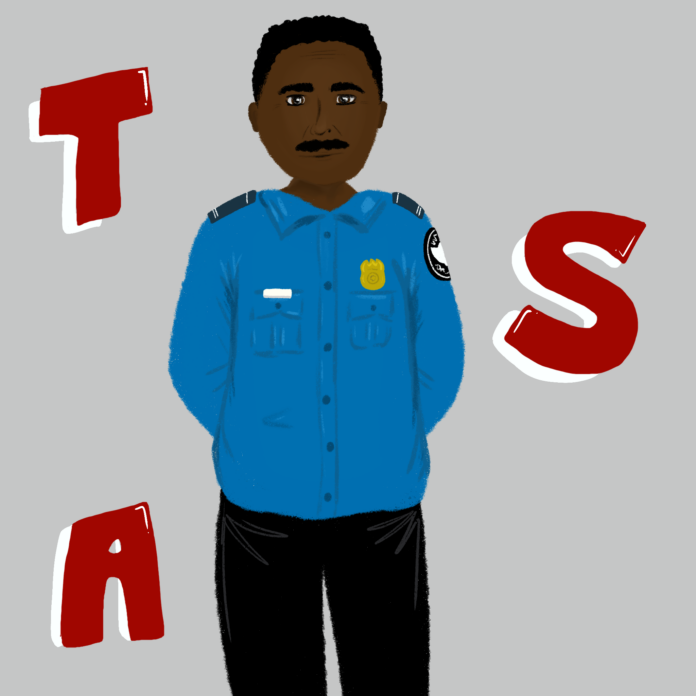So long as movies have existed, directors have sought to challenge themselves with both the story they tell and the ways they tell it. In 1939, “The Wizard of Oz” sought to challenge conventions by being one of the first in-color movies to be produced. In 1968, “2001: A Space Odyssey” sought to challenge conventions through groundbreaking special effects and a compelling aesthetic. However, one of Netflix’s most recently released movies, the “Die Hard”-inspired action flick “Carry-On,” may have undertaken one of the greatest challenges any film has ever attempted: getting you to be on the side of a TSA agent.
Jokes aside, for students at the College of William and Mary looking for a fun movie to start off their semester, the action thriller in question follows TSA agent Ethan Kopek (Taron Egerton) who attempts to thwart a terrorist plot set by a dangerous professional criminal played by Jason Bateman. In the first few minutes, the movie establishes how Egerton’s character views his TSA job as a dead-end career and an unfulfilling position after being denied a job as a police officer.
After talking about his situation with his girlfriend Nora (Sofia Carson), Kopek asks his boss, played by Dean Norris, for an increased role at the airport. Also, yes, Dean Norris as in the “Breaking Bad” Dean Norris. It was all I could think about when he was on screen, too. However — unfortunately for the main character but fortunately for the entertainment of my Saturday afternoon — his first day in his new role sees Bateman’s character blackmailing him in the sequence that sets the main plot in motion.
Bateman’s character spends most of the first half of the movie trying to get Kopek to help him smuggle a bomb into the airport through blackmail and threats. The plot then turns to a cat-and-mouse game where the protagonist tries to stop the bomb from being detonated. The main villain does have a group of people helping him — a la Hans Gruber’s gang in “Die Hard” — but one of the main twists of the movie is that one of them is likewise being blackmailed.
If this seems like an interesting watch for you, the main thing to understand is that this movie is not meant to be a movie designed to change your worldview or shatter your existing philosophy on life. If it does, that probably says more about you than it does anything else. Ultimately, “Carry-On” is just meant to be a “turn off your brain” action movie and doesn’t really seek to be anything more. And while that may seem like a negative, the movie knows what it is and does a good job of being what it set out to be.
Yes, if you think too hard about certain parts, things might unravel a bit. Why does no one seem to care that a police officer died of a heart attack in the middle of an airport more than five minutes after it happened? Why does no one seem to notice the sketchy guy wearing a black outfit speedwalking away from the police officer who just died of a heart attack? Why does the main villain have a magic tool to give people heart attacks like a Mickey Mouse gadget? Who knows! But it makes for an entertaining experience, so I can’t complain too much.
However, probably the biggest highlight of the film was Bateman’s character as the movie’s main antagonist. First, one of the most interesting things about his character is the fact that he, along with the other terrorists helping him, aren’t given names of any kind. They aren’t even given codenames or an alias, and in the ending credits, he is simply referred to just as “Traveler.” While a very small thing that I didn’t even pick up on at first, this goes a long way in making him more intimidating, mysterious and unpredictable.
Additionally, another really positive aspect is how frequently Bateman’s character interacts with Kopek. Too often, action and thriller movies have the big bad guy act as some armchair terrorist who spends 95% of the runtime yelling at people through a walkie-talkie and only coming face to face with the protagonist at the very end. However, in “Carry-On,” this is far from the case. Bateman and Egerton’s characters have a good deal of banter and action scenes together before the finale. Bateman also does a great job with a Giancarlo Esposito-esque cool and calculating mastermind vibe and succeeds in being a real threat until the end, where — spoiler alert — he gets killed by his own chemical bomb in a vacuum-sealed chamber.
The side characters, while a little more generic, also do a good job of keeping the plot chugging along and have a few entertaining moments here and there. One of the other TSA agents had a bit about wanting to become a rapper, which was admittedly a running gag that I found surprisingly entertaining. Norris’ character also does a good job throughout the movie, especially in one scene that involves the other person Bateman’s character is blackmailing.
Lastly, one of the other things to consider if you want to watch this movie is the fact that it’s streaming on Netflix instead of playing in a theater. Especially if you are feeling particularly lazy and/or introverted and/or cheap, this can definitely be something to consider. The fact that you can watch it in your dorm room instead of driving (or Ubering) to a movie theater is definitely a pro for students at the College. Overall, while not a lot beyond a fun and simple action thriller, “Carry-On” is worth a watch for fans of action movies alone for its great acting, easy accessibility and, plainly, for being a movie that knows what it wants to be.

